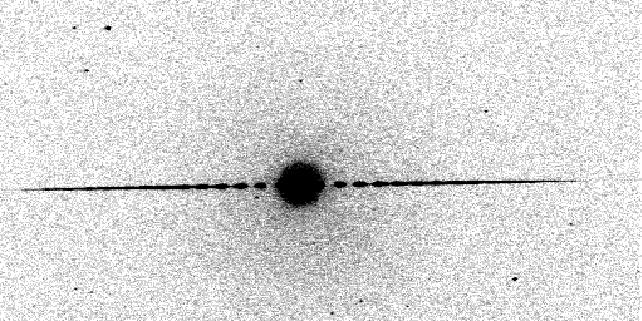
ESOP XVIII Homepage |
Letzte
Änderung: 01.11.1999 |
Astrometry With a New High Dynamic Imaging Device:
Technical Properties and First Results
Lars Winter
Dieser Vortrag stellt einen logarithmischen
Flächendetektor mit hohem Dynamikbereich vor und zeigt die ersten Ergebnisse,
die mit Teleskopen der Hamburger Sternwarte erzielt wurden.
Von besonderem Interesse waren dabei die astrometrischen Eigenschaften über den
gesamten Dynamikbereich des Detektors, die anhand von h-Persei demonstriert
werden sollen.
This paper describes the logarithmically scaled HDRC4 imager (made by Institute für Mikroelektronik Stuttgart, IMS) and its use in astronomy. The astrometric and photometric properties of the imager are discussed and a first analysis of the observations done in Hamburg are presented. To test the HDRC4 at the telescope, a cooled version of the camera designed by IMS was constructed in Hamburg. The observations done with this camera are explained and the basic parameters of the HDRC4 detector are evaluated.
The first pictures indicated the usefulness of the HDRC4 detector in astronomy and therefore a thermoelectrically cooled camera was constructed in Hamburg to find the limiting magnitude of the device. Contrary to CCDs and photographic plates the HDRC sensors are dynamic detectors. This means that the flux is measured and not the amount of light integrated over the exposure time. The only way to obtain images of faint stars is by way of cooling the detector to a temperature of -30°C (or below), thereby changing the time constant of the HDRC4 to approximately 100 seconds. Doing this allows us to register bright stars (i.e. Deneb) as well as faint ones up to 16 mag (Figure 1). The most interesting part is that the bright stars and the faint stars can be measured at the same time with a precision equal to that of a CCD detector. This will be demonstrated by measurements done in an open cluster (h-Persei).

Figure 1: This picture shows a star field centered on Deneb.
A grating in front of the astrograph was used to produce side images of the
bright star.
The spectral bandpass is visual (almost V) and the faintest stars have 15 to 16
mag.
Lars Winter, Hamburger Sternwarte
Address: Gojenbergsweg 112, 21029 Hamburg-Bergedorf, Germany
E-Mail: lwinter@hs.uni-hamburg.de Internet: http://www.hs.uni-hamburg.de
Telephone: +49 40 42891-4129 Fax: +49 40 42891-4198
 Last
update: 1999 NOV 01.
Last
update: 1999 NOV 01.(c) 1998-2000
Schwäbische
Sternwarte e.V. Stuttgart - All rights reserved
Bei Problemen: webmaster@sternwarte.de